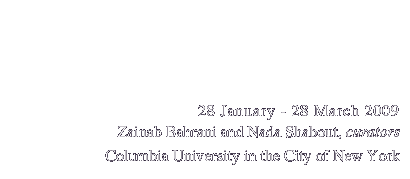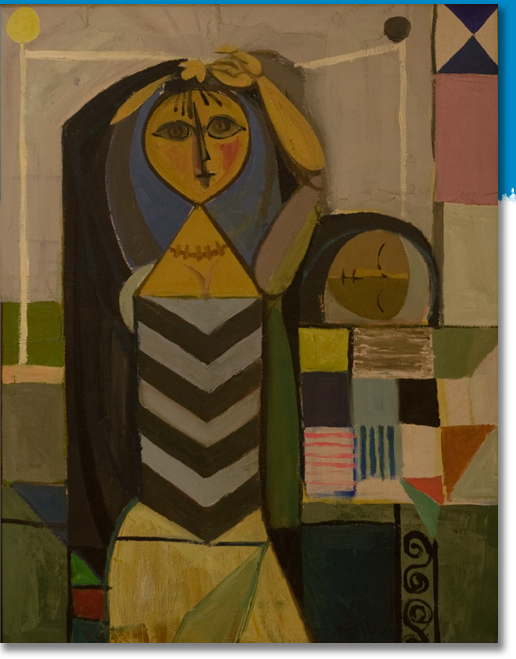In the mid twentieth century, artists in the newly independent nation of Iraq experimented with a form of Modernism that they saw as a new and revolutionary artistic idiom for a secular national state. Combining ancient and Islamic forms and genres of art and with Western Modernist influences, these artists set out to create an art for the people. At the same time, they participated in what they saw of Western Modernism by bringing to it older forms of Islamic abstraction. In this way, they challenged both traditional indigenous forms and what they learned from modern art in Europe. Today these works continue to challenge the pervasive image of Iraq as a country with no modern artistic past. When the museums and libraries were plundered in April of 2003, the museum of modern art in Baghdad was destroyed, its collections looted. Securing intact works of art for this exhibition was severely limited by that destruction. This exhibition is therefore a testament to the artistic and intellectual achievements of a Modernism that has been mostly erased.
The postcolonial period in Iraq, from the 1940s through the 1960s, was a time of decolonization, the declaration of independence of Iraq from British Mandate, and the years of struggles that ensued. It was a period of great optimism in the future of a secular state, free of Ottoman rule or British occupation. The most prominent artists working in those years, known as the Pioneers, formed a number of important groups. These artists consciously set out to formulate an art that would act as a political intervention. They underscored secular national identity and sought to define it through an artistic idiom that was in itself revolutionary.
This period is characterized by direct state involvement in sponsoring art and by exhibitions organized by the Baath Party. The responsibility of the artist shifted from educating the public and shaping public taste to engaging with state policy and expressing needs of the people. The 1970s was also a decade of heightened inter-Arab activities including state-organized festivals, which facilitated the launch of the Union of Arab Plastic Artists and the Arab Biennial. During the 1980s, nationalism was to become even stronger. An increased ideological bent and state control—intense Arabisim and anti-imperialism—along with a generally repressive mood, noticeably weakened experimentation in the arts. Nevertheless, a number of important experiments, particularly with the Arabic letter in art, were initiated and the stylistic development undertaken by the previous generation continued.
Unofficial art of the 1990s in Iraq developed in isolation from the rest of the world and the Postmodernism that emerged elsewhere. While the world was becoming increasingly connected through electronic communication, in Iraq, because of the constraints of a severe economic embargo, print journals, magazines, and electronic media were banned, and artists’ materials became scarce. Even lead pencils were forbidden under the rules of the embargo. During this time, artists began to explore the small-scale notebook or album as a primary medium of artistic expression.
After 2003, the traumatic dimensions of war became the subject of works of art. An unofficial art emerged that existed alongside officially sponsored public art and monuments. While diaspora and exiled Iraqi artists working in Europe and the United States experimented with new media and techniques, in Iraq itself artists used the format of the book or illuminated manuscript as an unsanctioned medium of artistic expression.
Notebooks—dafatir—transformed an ordinary object and traditional format into a subversive unofficial art form. The dafatir mark a return to the Sufi art of papermaking and to illuminated Abbasid manuscripts such as the Assemblies of al Hariri, a painted book that had miraculously survived the Mongol invasion of 1258. Dafatir thus came to stand for survival and continuity and became an important form of artistic expression in war-torn, occupied Iraq
> View all works in the exhibition
> Go to the Miriam & Ira D. Wallach Art Gallery
> Download a digital gallery talk, Co-Curator Nada Shabout


